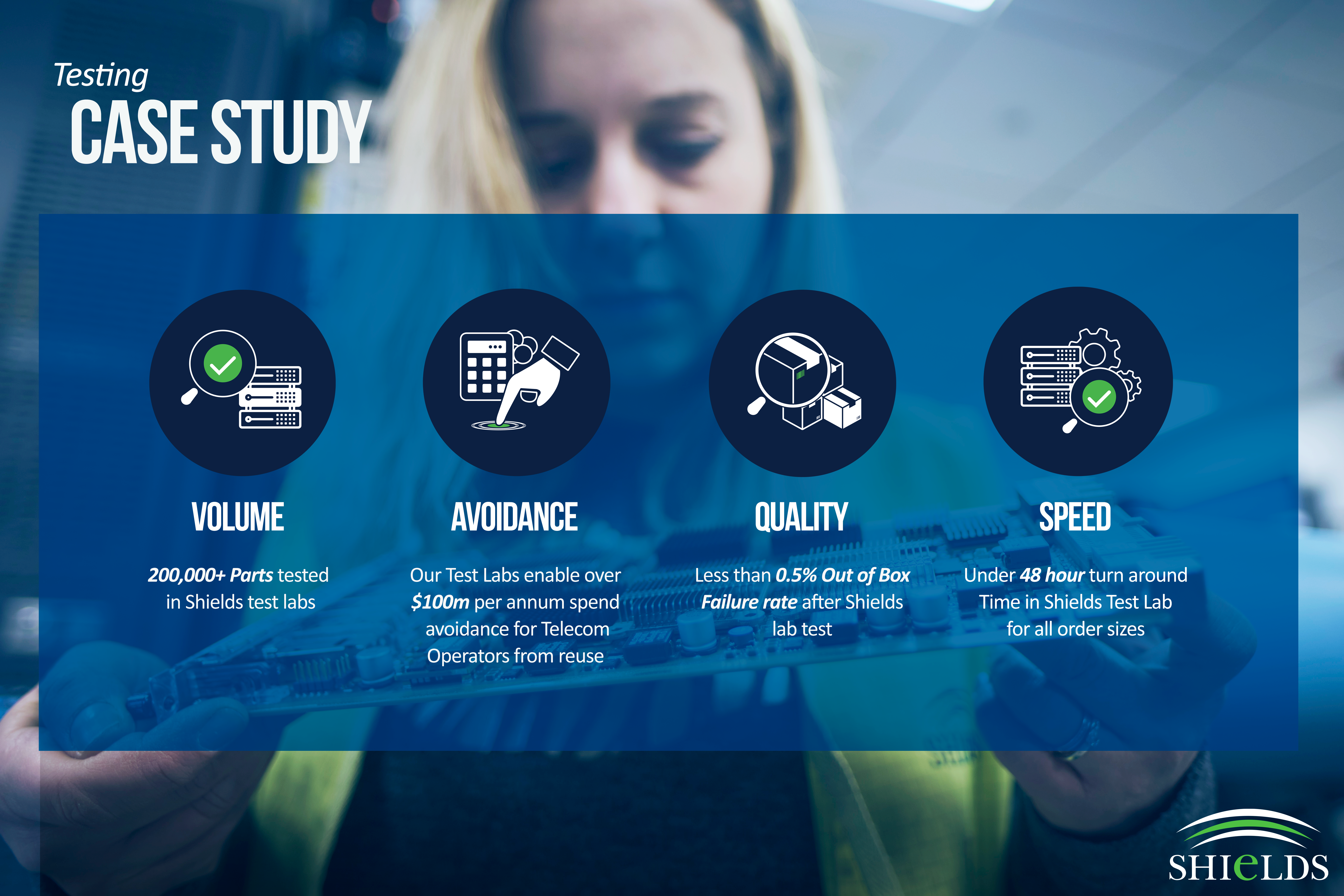Bringing the circular economy to the telecoms industry isn’t without its challenges but it is essential to our planet’s future. As pioneers in this space, we wanted to share how we developed our industry-leading telecoms network circular economy approach.
What is the circular economy and why is it important to the telecoms industry?
A circular economy in telecoms refers to the concept of designing and operating telecommunications systems and networks in a way that minimizes waste and pollution, while also conserving and regenerating natural resources. This can include strategies such as reusing and recycling materials, designing equipment for repair and upgrade rather than disposal, and using renewable energy sources to power network infrastructure. The goal is to create a sustainable system that can continue to provide valuable services to users without depleting resources or harming the environment. The circular economy is important in the telecommunications industry for a number of reasons:
- Resource efficiency: The telecommunications industry relies heavily on resources such as metals, minerals, and plastics, which are often mined and extracted from the earth. By implementing circular economy principles, the industry can reduce its dependence on virgin resources and instead use recycled materials.
- Cost savings: Implementing circular economy practices can help the telecommunications industry save costs by reducing the need to purchase new materials and by extending the life of products.
- Environmental benefits: The circular economy can help reduce the environmental impact of the telecommunications industry by reducing waste and pollution, and by decreasing the need for resource extraction.
- Innovation opportunities: The circular economy can also drive innovation in the telecommunications industry by creating new business models and value chains, and by fostering collaboration between companies, governments, and other stakeholders.
- Reputation: Implementing circular economy practices can also help the telecommunications industry to improve its reputation with consumers and regulators by showing a commitment to sustainability.
Overall, the circular economy can help the telecommunications industry to reduce its environmental impact, save costs, and drive innovation, while also improving its reputation with consumers and regulators.
The common concern telecom operators have with circular economy-sourced equipment:
Our CEO Daniel Jones explains; after several workshops both internally and externally with customers, Shields generated several hot topics that are needed to provide the foundations for a world-class telecoms network circular economy. A key worry for many was and still is that buying new equipment ensures you’re receiving a higher quality unit and that buying refurbished or repaired equipment will not offer this high standard.
Therefore, a primary one of these foundations is “quality”. Quality is defined as “the standard of something as measured against other things of a similar kind; the degree of excellence of something.” We realised early on that our Shields MarketPlace quality would be benchmarked against new equipment from original equipment manufacturers (OEMs). With this in mind, we set about ensuring the quality of our refurbished equipment was the best in the world.”
Shields’ solution to restoring confidence in the circular economy approach:
Once we had identified the benefits and key concerns the telecoms industry had with circular economy solutions, the Shields teams put our minds to breaking down the barriers which stood in the way of making the telecommunications industry more planet friendly. One of our key outcomes was developing a full-circle solution to ensure telecom operators would never have to worry about quality again.
Shields set out to create the highest quality telecoms test labs and talent within our teams, and in 2004 this began coming to fruition. Currently, we have over 150 years of collective industry experience in telecom testing within our Shields Technical Testing teams.
How Shields ensures the best quality of our refurbished or repaired equipment:
Shields run test labs from 6 global locations and follow very strict guidelines to ensure our quality is as high as it can be. That’s how we achieve such a low 0.5% failure rate compared to OEM’s 4% average failure rate.
Within these locations our skilled technicians perform full testing on network equipment to ensure that when the equipment is sent for deployment into a network it meets the following objectives:
- Equipment is functioning to OEM specifications.
- There is no identifiable difference between new equipment and our MarketPlace equipment.
- The First Time Right mentality which dictates that rollouts and faults can be fixed the first time with refurbished hardware.
- Shields MarketPlace upholds a reputation for best-in-class circular economy supply.
As demand is high and lead times are long for many OEMs, Shields also ensures a speedy quality assurance process with under a 48 hour turnaround time in our Technical Test Labs for all order sizes. Meaning our labs are testing more than 200,000 parts per year on average. Thanks to our team’s speed and accuracy our labs enable us to reduce lead times whilst ensuring the highest quality and over $100 million per annum spend avoidance for telecom operators for reused equipment. This helps maximise the efficiency and cost-effectiveness of our customer’s telecom infrastructure while minimizing the impact on their business operations and customer service.
What’s next for Shields’ Test Labs?
The next chapter for Shields’ test labs is to ensure our standards are replicated across the whole industry. We want to collaborate and work with all refurbished providers to create a global standard for refurbished network assets. Our vision is that no barrier should stand in an operator’s way to reuse equipment over buying new.
If you’d like to find out more about our testing team read our latest article here.

